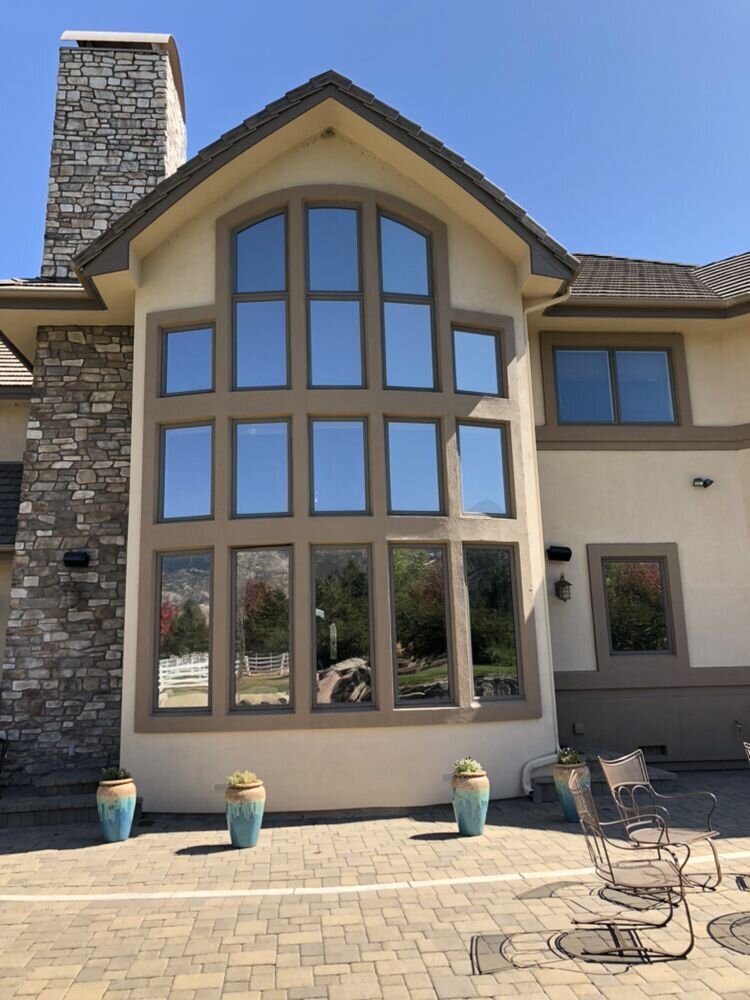Residential Window Tint: A Guide to Selecting the Right Color
Residential Window Tint: A Guide to Selecting the Right Color
Blog Article
Just How Residential Window Tinting Enhances Your Home's Power Effectiveness
Residential window tinting provides a compelling option for homeowners looking for to enhance energy effectiveness within their home. By applying specialized films to home windows, it efficiently lowers warm transfer, therefore supporting indoor temperature levels and reducing the demand for excessive home heating or cooling. This not just curtails energy intake but additionally supplies an extra comfortable atmosphere by mitigating glow. Comprehending the subtleties of how tinting jobs and choosing the ideal kind for your home can be crucial. Oddly, what variables should one consider prior to making this financial investment?
Understanding Home Window Tinting
Understanding window tinting is essential for property owners looking for to enhance both convenience and power effectiveness in their space. Residential Window Tint. Home window tinting entails the application of a slim movie to the inside or outside surface area of glass home windows. This movie can dramatically regulate the quantity of sunshine and warm that goes into a home, therefore influencing indoor environment conditions
There are various kinds of window tinting movies offered, each with distinct homes. The effectiveness of home window tinting is typically measured by its Visible Light Transmission (VLT) percent, which suggests just how much light can pass through the movie.
Advantages of Energy Performance
Window tinting not just enhances appearances yet likewise plays a significant function in improving energy effectiveness within domestic rooms. By decreasing warmth transfer through home windows, colored films produce a more steady interior environment, which can lead to substantial reductions in energy intake for cooling and heating. This power performance equates right into reduced utility costs, supplying homeowners with considerable lasting savings.

Additionally, home window tinting improves the comfort of living spaces. By minimizing glow and blocking hazardous UV rays, colored home windows develop a more pleasant setting, which can result in improved health for owners. The defense versus UV rays additionally aids protect furniture and floor covering from fading, contributing to the longevity of family items.
How Tinting Functions
Tinting films run via a mix of sophisticated products and innovations designed to manage the quantity of solar power going into a home. Largely composed of polyester, these movies typically incorporate ceramic or metal bits that mirror and absorb heat. This dual capability enables them to significantly minimize the infiltration of ultraviolet (UV) rays and infrared radiation while permitting noticeable light to pass through.
The efficiency of home window tinting is measured by its solar heat gain coefficient (SHGC), which indicates just how much solar energy is sent through the window. Reduced SHGC values are preferable as they denote higher warmth rejection. Furthermore, home window tints can feature a range of tones, permitting home owners to personalize their visual choices while enhancing energy efficiency.
Furthermore, these films serve as a barrier, stopping warmth loss throughout colder months by showing interior warmth back into the home. This thermal insulation result matches the cooling benefits gained during warmer months, adding to a balanced indoor environment year-round. By taking care of solar power successfully, domestic Learn More Here window tinting not just boosts convenience yet also plays a crucial duty in lowering power intake and decreasing energy costs.
Picking the Right Color

There are various types of window films offered, consisting of dyed, metalized, and ceramic. Ceramic films offer exceptional warmth control without endangering presence and are extremely sturdy, making them a preferred choice.
Visible light transmission (VLT) is an additional critical variable, as it shows the amount of natural light that can go through the colored glass. Home owners must choose a color with a VLT that enhances their lights choices while still giving adequate glare reduction.
Additionally, evaluating the solar warm gain coefficient (SHGC) can help identify how well a tint can block warmth from sunlight. A reduced SHGC shows much better heat control, ultimately boosting power effectiveness.
Installment and Upkeep Tips
Appropriate installment and maintenance are essential components in optimizing the benefits of household window tinting. Experts additionally use specialized methods and devices, which can enhance the sturdiness and performance of the tint.
Complying with setup, upkeep is essential to lengthen the life of the window film. It is suggested to wait at the very least 30 days prior to cleansing the colored windows to permit the glue to heal fully.
Resolving these problems quickly can avoid further damages and maintain power effectiveness. By adhering to these installation and upkeep tips, homeowners can guarantee their home window tinting continues to provide substantial energy financial savings and convenience for pop over here years to come.
Final Thought
In conclusion, household window tinting offers as a reliable solution for enhancing energy performance within homes. By decreasing warmth transfer and blocking dangerous UV rays, window films add to lower energy intake and improved indoor convenience.
Home window tinting entails the application of a thin film to the interior or outside surface area of glass windows. By decreasing heat transfer with home windows, colored films create a much more why not try this out secure indoor environment, which can lead to substantial reductions in energy usage for heating and cooling.The performance of home window tinting is measured by its solar heat gain coefficient (SHGC), which suggests exactly how much solar power is transmitted with the home window. By taking care of solar power properly, residential window tinting not just boosts convenience but also plays an important function in decreasing energy usage and reducing utility bills.
By decreasing warm transfer and blocking hazardous UV rays, window films contribute to lower energy intake and boosted indoor comfort.
Report this page